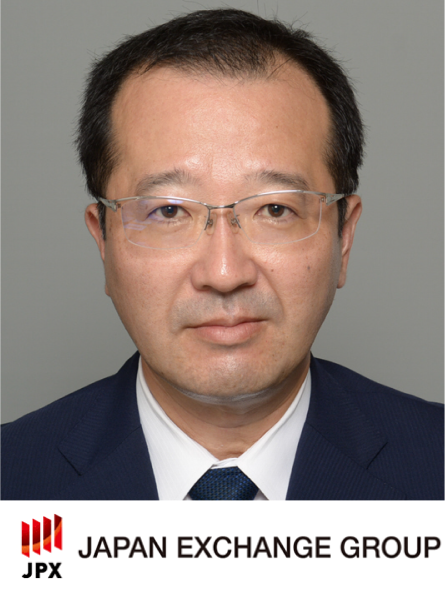# RepRisk interviews Adam Black, Partner and Head of ESG & Sustainability at Coller Capital
1. RepRisk: Please provide some insight into your specific role at Coller Capital (Coller) and explain the work that you and your team do.
Adam Black: The role continues to evolve as the business develops and grows.
As an investor in the secondaries market, we are both LP and GP – so a hybrid investor – meaning our approach to ESG is also somewhat hybrid.
When I joined in March 2016, there were elements of ESG that were already well established, but I was largely given a blank canvas to develop. The creation of a full-time dedicated ESG role within the investment team was new for the firm and untypical within secondaries at that time.
From a personal perspective it soon became apparent that the integration of ESG into the investment processes of a large secondaries firm was going to differ markedly from the ESG integration I carried out in my previous role at a buy-out firm.
The main difference is the need to focus on the underlying private equity managers (GPs) into whose funds we might invest. We have exposure to many thousands of companies through investments in the underlying GPs. However, we are removed from the level of the assets and the ESG role in secondaries is not portfolio company facing. Nonetheless, the team draws upon prior operational experience that we believe brings a level of authenticity and rigor to our approach.
Our main focus is on the analysis of every investment opportunity prior to it coming to our Investment Committee. This includes thinking about how we might engage post investment and how best to play our part in influencing the wider market. In doing so we work with, but are independent of, the deal teams.
We are mindful that many firms talk about “integrating ESG into the investment process” and conscious that our approach must not simply tick a box. Yes, there are elements that involve “ESG Checklists” but we give very careful consideration to every prospective investment.
We screen for potentially problematic assets using internal and third-party databases, notably RepRisk, but we do not base a decision on third-party data alone. We also review the response to our detailed questions (GP and asset related), and how the GP comes across (both in public and importantly also in practice when we engage with them on a transaction or wider ESG initiative).
All this information feeds into the mechanics of our process to inform our formal ESG comment for the Investment Committee.
Our ESG Policy applies across the business at the firm and fund level. The ESG team is therefore also active on a wide range of other projects and initiatives across the firm and beyond, working closely with all of Coller’s business functions.
2. RR: Coller became a client of RepRisk in 2016. How do you and your team incorporate RepRisk data into your investment strategy and processes?
AB: Coller has worked with RepRisk since 2016 (soon after I joined the firm). I had experienced the capabilities of the RepRisk ESG Risk Platform in a role prior to joining Coller so already knew it was ideally suited to private markets.
We have found it particularly helpful in the context of our investment mandate where we see high volumes of deal flow and multiple private entities to evaluate and monitor.
RepRisk data is used in every prospective investment as part of our due diligence and the data we get is part of the triangulation effort we adopt in coming to a view from an ESG perspective.
The RepRisk Platform also provides an important monitoring role. We have various watchlists uploaded on the platform including all the major underlying GPs, largest asset level exposures, and all other portfolio company exposures. We also created a firm-level watchlist for Coller’s major suppliers to assist with our obligations under the UK Modern Slavery Act.
Elements of RepRisk data are used to inform the ESG comment at the Investment Committee and this includes charts generated to visualise the key findings from a RepRisk search. These sit neatly alongside our tabulated due diligence findings, our proprietary climate risk charts for a portfolio and overall ESG rating, and comment for a transaction.
Over the years we have spoken to many GPs, LPs, and some of our indirect investment peers about RepRisk, and many have since become RepRisk clients. The RepRisk Platform is ideally suited to the private markets.
3. RR: Coller began putting ESG policy in place ten years ago. How have your policies and processes developed since, and where do you see the value of integrating RepRisk data today?
AB: Our policies and processes continue to evolve. We frequently consider how they might better serve our investors, the Investment Committee, colleagues across the firm, and the GPs in which the Coller funds are invested.
Over time our processes have become more sophisticated. For example, in completing climate risk scenario analysis on the funds in 2019-2020, we have been able to add a new climate risk dimension to our ESG commentary.
We would not rely solely upon RepRisk data to evaluate a prospective investment, but it is an important part of our process. Where it tends to be the main feature of our analysis is when we see multiple fund positions. For those types of secondaries transactions it would be unrealistic for us as ESG specialists to ask detailed questions about every underlying GP and the hundreds of asset level exposures.
We find the most efficient approach is to allow the deal team to play a role in evaluating the positions using RepRisk data. The ESG team oversees their work, but to maintain the independent views of the ESG function we lead on all other types of secondaries, notably the GP-led transactions or ‘direct’ secondaries. We run the same internal and external database searches, including RepRisk, but we also need to apply our expertise as practitioners to develop ESG due diligence questions and interpret the response before coming to a view. RepRisk data provides a level of company-specific insight that is so important in a private markets context.
4. RR: Shareholder engagement is a cornerstone of your investment strategy. Why do you believe it is important to use a dataset that excludes company self-disclosures in your engagement processes?
AB: Prior to joining Coller, I worked with or at portfolio companies for much of my career. I fully appreciate there are both positive and negative impacts to running any business, and with a background in environmental science understand that ESG and sustainability is by nature inter-disciplinary, inter-dependent, and highly nuanced. From experience I have learned that it pays to listen to all sides of any story, to triangulate the data as far as possible, and to draw my own conclusions.
What the team is seeking to do is to come to a balanced view about an investment. As we have spent our entire careers doing this, we know what the ESG issues are likely to be at the asset level. Where required, we have access to third party information (such as contacts in our professional network or reference to materials published by the Sustainability Accounting Standards Board) to help calibrate our thinking, but at the end of day we want to understand as far as possible what is happening on the ground at the underlying GP and across their assets.
In private markets that information is not often self-disclosed, i.e. not what the company chooses to say about itself, and so we like to know what “others” are saying about a company. We want both sides of the story.
We review company self-disclosures ourselves (where public) and we often receive them as part of the response to our due diligence questions. The overlay of additional RepRisk data provides us with further information with which to engage and consider during due diligence. RepRisk excludes any company self-disclosures, looking at what the world says about a company instead of what a company says about itself.
We are not commenting on the validity of the information that RepRisk highlights, but we are asking for some comment from the entity and as specialists we will consider the response and factor that into our view.
If I were to try to visualise that, it looks like an ESG comment that is a mix of narrative, tabulated information, and charts. A comment that includes our overall view on ESG risk, as well as views on the GP, the assets, RepRisk’s research and metrics, material media items and portfolio climate risk, and how we propose to engage with a GP post-investment, among other information.
5. RR: What do you believe to be some of the main differentiating factors and challenges of ESG integration in the private equity secondaries market – and how does the integration of RepRisk data help address those challenges?
AB: As one of the largest private equity secondaries firms, the volume of deal flow that we see is very high. Much higher than anything I experienced when working at a GP. While the focus of prior roles was often ESG and value creation during the holding period to exit, within secondaries the focus is on upfront analysis and agreeing the extent to which we monitor and engage post investment.
We do not manage the assets and have no say in the form and timing of any exit – all of those decisions reside at the level of the underlying GP.
We are often faced with a high number of prospective investments to evaluate and we need to be fully prepared to provide a comment at our weekly Investment Committee.
For the secondaries investor then it is largely about gaining conviction in the underlying GP and their ability to manage the assets remaining in a fund we might take a position in – all from the perspective of ESG.
The particular ESG challenges that come with a secondaries mandate include: being required to opine on a large number of investments at fairly short notice or limited time frame; being provided with often very limited information by a seller or broker; and having a variable degree of influence on a transaction.
At the same time our ESG Policy requires us to evaluate every investment to the best of our ability, meet the requirements of our investors (e.g. screening for potentially problematic assets), and think about how we might engage post-investment.
For multiple fund positions we might see tens of GPs and hundreds of underlying assets, so our approach is different from a GP-led transaction, for example. For those we have more visibility on the GP and assets, often much more information, the ability to ask detailed questions and (having more influence), we are more likely to engage post-investment.
There is an interesting dynamic at play within secondaries due to the role we can play as an ESG influencer throughout the private equity industry. This can be quite broad and high level (e.g. through the surveys we ask GPs to complete); but where we feel we should (such as GP-led investments), this can be more granular (e.g. working with a GP to deliver workshops, support in policy development, or undertake asset-level assessments).
We are mindful to make the most of every opportunity to evaluate and calibrate ESG to the best of our ability for a given portfolio investment using the information available to us. RepRisk data is very much part of that process.
We are equally mindful to assess the extent (if any) to which we might be able to craft a portfolio of assets and subsequently engage with an underlying GP. Again, the RepRisk data plays a role in helping us arrive at an informed view.
While we do not solely rely on RepRisk, it is a key reference and integrated step in our process. We could not in all good faith look an investor in the eye and say we have properly screened a portfolio without using some of the data RepRisk provides.
First, these are private companies and RepRisk is often the only third-party dataset of the scale and scope we need to capture the named entities we are analyzing. The language capabilities – RepRisk covers more than 23 languages – are obviously helpful to us as global investors.
The features of RepRisk also allow us to opine on specific issues and regulations, some of which are important to some of our investors, for example, whether a portfolio contains assets that might be in violation of the UN Global Compact.
And RepRisk’s watchlist capabilities play a role in helping us to monitor certain investments and our own firm’s suppliers.
The challenge for secondaries is to design and build a program that speaks to both the LP and GP components of the mandate and that reflects different types of secondaries investments. Careful consideration needs to be given to what is reasonable and achievable in the specific circumstances of an investment and the overarching limits inherent within the mandate.
6. RR: With a career spanning almost 30 years in ESG and sustainability (including 13+ years spent within private equity), what trends do you anticipate for the intersection of ESG and private markets in the coming years?
AB: The time when firms could get away with a veneer of ESG are over and companies like RepRisk can only benefit from the increase in analysis required during due diligence and monitoring.
I struggle to see how firms (particularly those in the private markets with an indirect model of investment) have managed to integrate ESG into their investment process without having access to some of the data a platform such as RepRisk provides.
Many stakeholders, notably financial regulators, are fully focused on private markets and its ESG claims. Firms will now have to be prepared to prove their current claims and perhaps also provide evidence to support past claims. The mechanics of this ESG “integration” will need to become much more transparent and as an industry we should be prepared for that and for some challenge as to the positions we have adopted.
Conclusion
Adam Black is Partner and Head of ESG & Sustainability at Coller Capital, one of the largest private equity secondaries firms. In his role, he developed and bolstered Coller’s existing ESG efforts. Coller uses RepRisk for comprehensive due diligence in every prospective investment, portfolio monitoring, and regulatory compliance. RepRisk is often the only third-party dataset of the scale and scope Coller needs for its investment analysis, as RepRisk covers 145,000+ private companies across every sector and market. Additionally, RepRisk’s language capabilities – more than 23 languages covered – and daily-updated data are helpful for Coller as global investors.
Bio
Adam is a Fellow of the Institute of Environmental Management & Assessment (FIEMA), Chartered Environmentalist (CEnv), and Chartered Member of the Institution of Occupational Safety & Health (CMIOSH). He has spent his entire career within ESG and sustainability (the past 13 years employed within alternative finance) with most of his direct financial experience within private equity, real estate and venture, as well as secondaries (of all types).
He has developed and implemented risk mitigation and value creation impact strategies across most industry sectors in over 60 countries worldwide. As a Partner in Coller Capital’s Investment Team, Adam draws upon this experience to lead the ESG Function and has primary responsibility for integrating ESG and sustainability within all investment decision-making and management processes. He also leads and supports on a range of ESG and sustainability initiatives applicable across the firm.
Before joining Coller Capital in 2016, he was Partner and the Head of Sustainability at a multi-national private equity, venture and real estate manager (Doughty Hanson), and was one of the first dedicated operational ESG leads in the industry; responsible for implementing one of the first ESG value creation impact strategies in private equity. Prior to this, Adam worked at KPMG Europe, at ERM (a leading sustainability consultancy) and ERM CVS (ISO certification business), and for an oil and gas focused multi-national (Halliburton).



